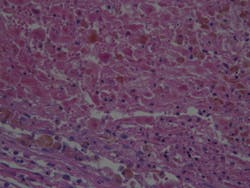Cell membrane protrusions called blebs that typically signify the end of life for healthy cells do the opposite for melanoma cells, activating processes in these cells that help them to survive and spread, a UT Southwestern study suggests. The findings, published in Nature, could lead to new ways to fight melanoma and potentially a broad range of other cancers.
The researchers explained that healthy cells that separate from larger tissues face almost certain death through a process called anoikis unless they can reattach within hours. However, one hallmark of malignant cells is their ability to stay alive indefinitely once they separate from tumor tissue, allowing them to survive and migrate elsewhere in the body to form metastatic tumors. While detached, they form blebs indefinitely, whereas healthy cells can form blebs only for about an hour after detaching from their tissue of origin.
When the researchers treated melanoma cells with a compound that inhibits septins, called forchlorfenuron (FCF), the septins could no longer scaffold Ras proteins, resulting in an inability of the cells to sustain the chemical reactions that were keeping them alive. Hence they died when they became detached from other cells, which is identical to the fate of healthy cells. Conversely, when they introduced mutations that caused healthy cells to form blebs for longer than usual, these cells became as anoikis-resistant as cancer cells, even though these cells did not harbor cancerous Ras mutations.

